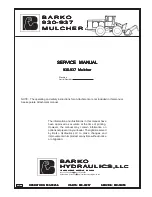
Chapter 5 — Techniques
77
command in the Channel Function pop-up menu — further details are in
the
Chart Software Manual
. This is particularly useful when you want to
recalculate the integral from the original current signal. The real time
methods will give good results only if the appropriate sensitivity range
has been pre-selected — and it is not always possible to determine this
beforehand. A good strategy is often to use the real time integral
function to get an idea of what is happening during an experiment and
the use post-acquisition integration to prepare data for a final report.
With Scope software the current signal can be integrated by using the
Computed Functions… command,
chosen from the Function menu. This is actually a post-acquisition
function — you can always cancel it afterwards to look at the
underlying current data. Refer to the
Scope Software Manual
for more
information.
Chronopotentiometry
Chronopotentiometry requires that a constant current be maintained
between the working and auxiliary (counter) electrodes. The potential at
the working electrode is monitored. For many systems the potential will
remain approximately constant until the electroactive species is
consumed, after which there will be a sudden change in the potential.
For this type of experiment it will be necessary to run the Potentiostat in
Galvanostat mode with Chart or Scope software. For correct operation
make sure that the ‘CH 1 (I)’ cable of the Potentiostat is connected to
Input 1 of the
e-corder
, and the ‘CH2 (E)’ cable of the Potentiostat is
connected to Input 2.
Note that galvanostat mode is not available with the Picostat or
QuadStat.
When using the Potentiostat as a galvanostat, the applied current can
be set within ranges up to 100 mA. Select the smallest range setting
consistent with your desired current to ensure maximum accuracy. For
example, if a current of 750 µA is required then a range setting of
1 mA (1000 µA) should be used, and then exact current value adjusted
accordingly.
Summary of Contents for Picostat
Page 8: ...4 eDAQ Potentiostats ...
Page 28: ...24 eDAQ Potentiostats ...
Page 44: ...40 eDAQ Potentiostats ...
Page 64: ...60 eDAQ Potentiostats ...
Page 104: ...100 eDAQ Potentiostats ...
Page 112: ...108 eDAQ Potentiostats ...
















































